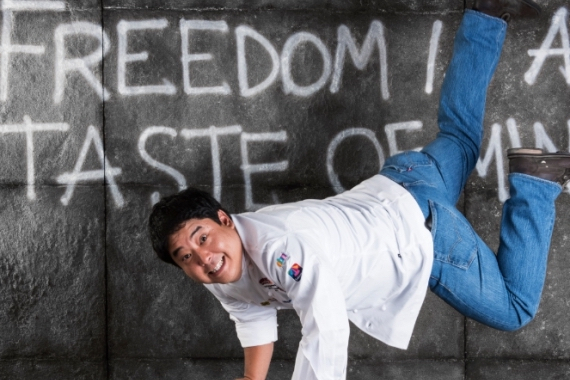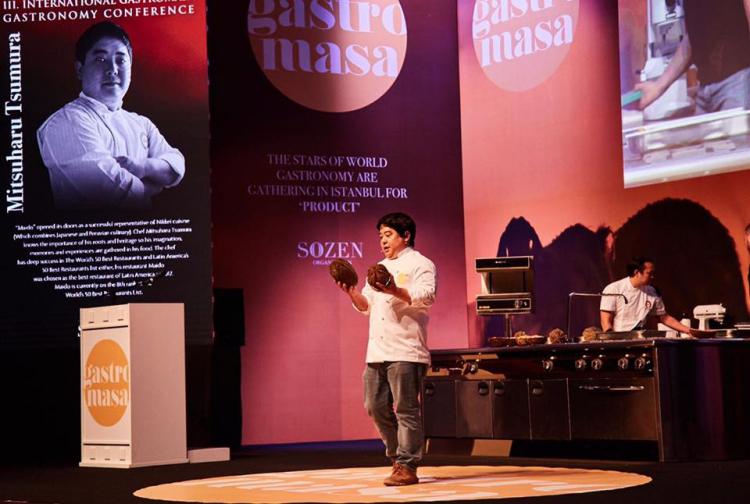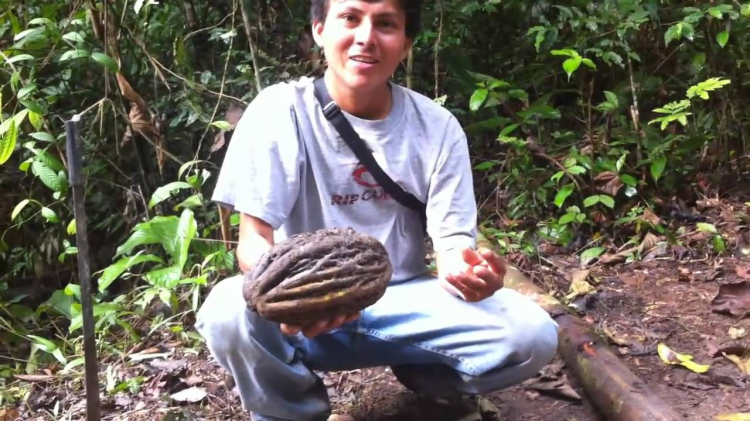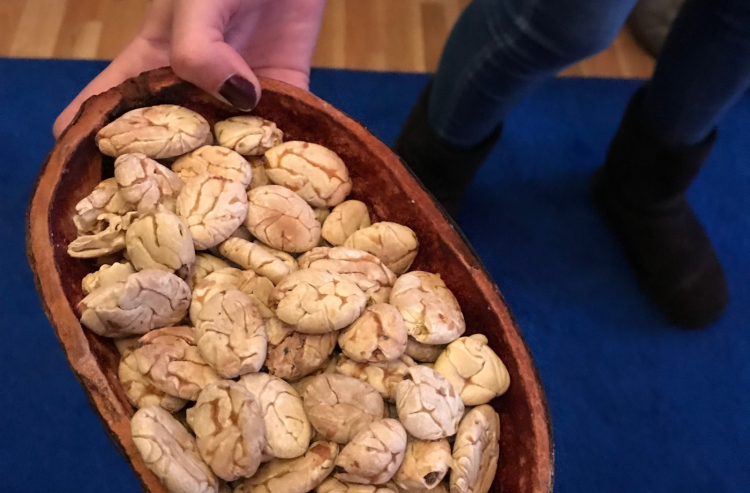Ürün is the Turkish word for “product”: this was the main topic at opulent cuisine congress Gastromasa. The third edition took place a few days ago in Istanbul, with journalists arriving from all over the world, including myself. On stage, some of the big names in the international restaurant scene, Mauro Colagreco, Joan Roca, Virgilio Martinez, Paco Torreblanca, Carlos Garcia, David Thompson, and then some emerging young chefs (Kamilla Seidler, Andrea Dopico, Hiroyasu Kawate…) and Italians Gianluca Fusto and Luigi Taglienti. We’ll speak of them separately.

Tsumura at Identità Milano 2016
, a past speaker at
Identità Milano, was also there: Peruvian of Japanese origins, from
Maido in Lima, he’s considered the greatest living
Nikkei chef. Some background: many Japanese people who emigrated to Peru after WW1 (today they’re around 60 thousand) started opening restaurants where they served local Creole dishes, because that’s what people wanted. They gradually added some variations to the recipes, which came natural to them, given their tradition at home: like using lots of fish.
In Pre-Colombian Peru, the was a strong connection with the sea, but it was less popular under the Conquistadores. In the early 20th Century Peruvians ate fish, but only a little and only few did. It was either fried or marinated at length in lime juice. Full stop. «Until fifty years ago nobody ate octopus in Peru. Fishermen would throw it away. If you walked on the beach, you’d see all this octopus on the ground, and the Japanese would take it» (Tsumura). Something similar happened with eel and calamari, sea snails and sea weed, and in a way even with tuna and prawns, scallops or mussels, which were once considered “food for the poor”. Thanks to Nikkei people, today they’re used to make fabulous ceviche. «The Japanese people have revolutionised our dish» admitted Gastón Acurio.

Again Tsumura and mocambo at Gastromasa 2017
So here’s what Nikkei is today: neither a Japanese cuisine with Peruvian influences, nor a Peruvian cuisine with Japanese touches. It’s the meeting of two people separated by 20.000 km, the result of necessity and instinct. The necessity is that of Japanese immigrants in Peru who had to adapt their food style to the products of their new homeland, and they surprisingly found out they’re often close to their tradition: fish, vegetables, and rice. Instinct led them to a natural, unaware fusion of two styles so far apart. Decades of forced cultural – and culinary – contaminations, though millennial and therefore tenacious, gave life to something new and extraordinary. «The contrast is in the general tone. Peruvian cuisine is hard rock, strong, spicy, vibrant. Japanese cuisine is like classical music, it’s more subtle, delicate and dedicated to product» (
Tsumura).

A farmer from the Amazon forest with a freshly picked mocambo
, established in 2009, is now at number 8 in
The World 50 Best Restaurants, and at number one in the
Latin Americas's 50 Best Restaurants.
Tsumura is directing his avantgarde research to the Amazon forest, combining exotic fruit with the intense flavours of Nikkei cuisine: a take on umami from the greatest pluvial forest of the planet. Indeed, it is from the Amazon forest that he brought the
ürün, the product, presented at
Gastromasa:
mocambo (the fruit of
Theobroma bicolor), called
pataste in Central America (from the original Maya name "
pataxte").

A tasting of mocambo seeds at Gastromasa 2017
is a plant from the
Theobroma genus, to which cocoa plants also belong. «Its fruit is not well known, we consider it like the “forgotten brother” of coconuts», said the chef. Indeed they are very similar: similar size, the outside shell varies from green to brown depending on how ripe it is, it is woody (but with large veins that set it apart from coconuts), and therefore it has to be sawn to get to the inside, which hides a firm pulp hiding four seeds, which you can eat both fresh or toasted, «or fried and paired with eggs», in simple dishes, «which is part of the traditional food culture of the natives. It’s always been an emblem of poverty», even though it was called “
frutos de dios”. It is now having its redemption, growing in popularity, following the cocoa boom. Hence
Tsumura has created a network with small producers who have stubbornly continued to grow it and who, in their turn, asked great chefs like him to enhance it in the kitchen.
It can have multiple uses.
Tsumura says you can boil its sugary pulp, after removing the seeds, and make jam or juices, or sorbets and ice creams. You can eat the seeds either fresh or toasted and salted, as mentioned (they taste something in between a cashew nut and a walnut). Or else: you can boil, press, roll and dehydrate and fry them, so as to make crispy chips. You can also make a paste (the chef says it’s «a sort of hummus» in honour of the Turkish hosts) with onion and soy sauce, to season ceviche. And a flour too, to make bread. Even the membrane between shell and pulp can be used, perhaps adding some lemon zest to aromatise it, in pastry making. «We’re at a good stage in experimenting the production of oil», says the Nikkei chef: mocambo seeds contain over 50% fat.
A happy conclusion: «What was once the food of the poor par excellence is proving to be very versatile and interesting. Today modern gastronomy offers a great opportunity for development». And it offers it to farmers from the Amazon too, who need it.
Translated into English by Slawka G. Scarso